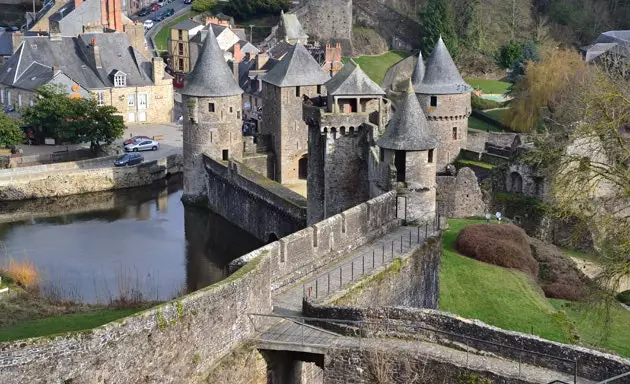
Fortress of Fourgères, the largest in Europe... with a small mouth
Brittany and Pays de Loire (formerly integrated into the Breton territory) are the only French departments in which there are no toll roads, in which you can drive along its main roads without any toll. Gossips say that it is the only fiscal benefit they have left after centuries of confrontations with mother France. From those convulsive times remains a way of being that now its citizens claim with humor. The Bretons parody themselves as drinkers, pilgrims of the world and tough guys.
Any aspiration for independence is reduced to a claim for their own language and their celtic connections that makes them talk about Galicians and the Irish as their compatriots . Still, they can't help but display their local jewelry, turned into monuments to remembrance , to the memory of a decentralized, belligerent, pagan and medieval society. But it would be a lie to speak of these places as a whole. Its inhabitants often disown the neighboring city, criticizing its icons and its achievements. The starting point of this route is an example of this.
Saint Malo it was fortified to control the entrance from the sea from the North, an example of maritime defense making the mouth of the Rance river an impregnable access. Its solid walls guard streets full of century-old shops, charming hotels and enormous mansions, fruit of the riches that throughout its history its inhabitants have done thanks to its great port and turning its military past into a tourist present thanks to its beaches and its imposing wall, which gives the visitor a walk along the sea, gunning down imaginary enemies and defending a city which, for a moment, he makes his own.
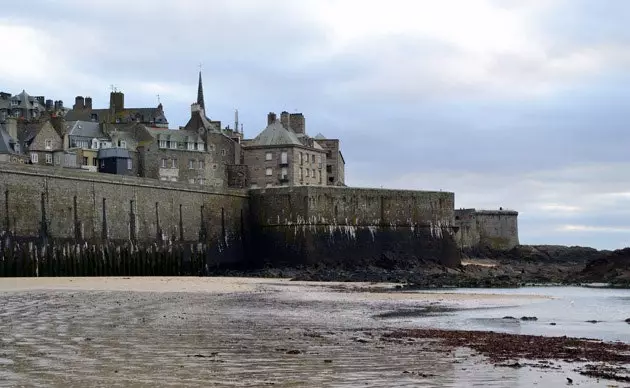
Saint Malo, gunning down imaginary enemies
Going up the river Rance appears the river port of Dinan and, on top of the steep hill, the old walled city. The convoluted, narrow and emblematic Rue Jerzual joins these two points and becomes the throbbing artery where today's life takes place but in a medieval enclave. The riverbank is drawn between the contrast of the most modern boats that sleep in its backwater and the imposing old mansions, where slate and granite combine their sobriety. The colorful exposed coffered ceiling breaks the monotony revealing the wooden skeleton of the houses. For its part, the city that stands guarding the meander is an example of a Gallic city: regal, rugged yet charming.
touring Dinan , it is understandable why Rene Goscinny and Albert Uderzo they located the mythical village of Asterix and Obelix on the Breton peninsula. The twisting and labyrinthine streets connect small squares where sober Romanesque churches stand. The entire center is sheltered under the protection of its fortress, formed by the circular tower of the Duchess Ana, an old defensive bastion that today houses a dispensable municipal museum.
Combourg stands inland, ruling the countryside where cows, apple trees and cereals give the picture a spring color. Its fortress stands out in its feudal skyline , perfectly square that could serve as a mold for beach toys. The Château de Combourg does not have the military air of its neighbors, but its melancholic, nostalgic and romantic character gives it a special charm . Not in vain, this place was the place of residence of François-René de Chateaubriand, father of romanticism in French literature.
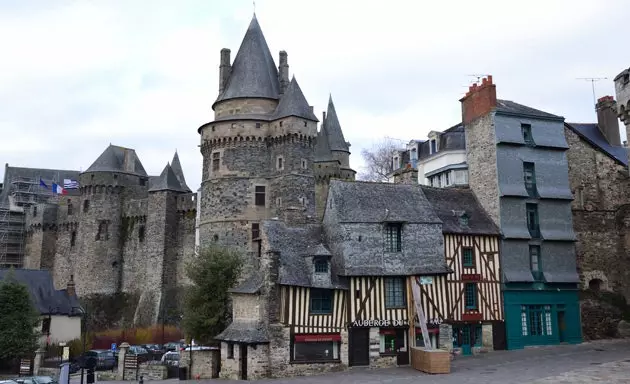
Vitré, where time stops
The largest fortress in known Europe awaits the traveler in Fougeres . Its inhabitants brag about it vehemently, although they quietly acknowledge that this merit is not scientifically proven. But apart from the Guinness record and other marketing strategies, the gigantic castle is made to impress anyone . And even more so when its battlements extend outside the castle to shelter the city and protect it from the invader in ancient times and from the huge precipice today.
Today, in addition to being the largest tourist attraction in the region, it is the center of all cultural activities in the city. Inside there is a fun tour designed for children where they learn about history and enjoy a live initiation class on war architecture. But beware, Fougères is not a boring place. In addition to the more technical data, the visit is sprinkled with stalls where video projections, interactive games and other attractions capture the attention of the little ones. In these they teach them the mythological legends that, traditionally, are located in this enclave and its surroundings and that are carried out by witches, knights, princesses and even dragons. In its large courtyard, medieval days are organized, with jousting fights and craft markets that serve for Fougères to do justice to the topic: time has stopped here.
If any people can dispute the award of ‘Most spectacular village of the Middle Ages’ to Fougères that is Vitre . Both share many similarities: their castles stand on a steep hill from where they oversee the life of the city, their houses maintain a feudal appearance and their streets have not suffered the passage of time. Perhaps that is why they vindicate themselves by comparing themselves with the neighboring rival.
Apart from traditional disputes, Vitré has plenty of arguments to sell itself. First of all, its versatile castle. In addition to housing the town hall and other public bodies, it is a tourist attraction for its beautiful façade, dominated by countless circular towers that leave almost no space for the walls. A shape that is more reminiscent of a lofty palace than a defensive building. In second place, its gothic cathedral, located just across the old heart of Vitré, inviting the visitor to lose himself in the roads that connect it and in the shops, bars and restaurants that populate them. The Church of Notre Dame It is an example of the most flamboyant and ornate Gothic style in France and an example of the power of this town during the maximum splendor of the Breton dukedom.
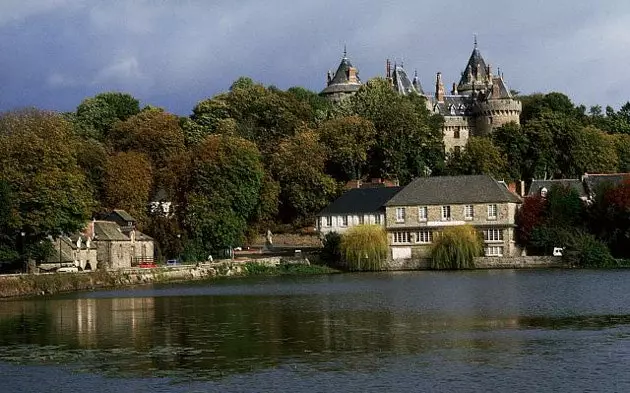
Chateaubriant, Italian charm within Breton ramparts
Following the old border in the direction of the Loire and Nantes, you will find Chateaubriant , a town built under the same parameters as the previous ones but that has a different castle . Although this Château was fundamental in defending the brand from sieges, its greatest attraction today is not limited to its imposing presence, but to its evolution. When it ceased to serve exclusively for war purposes, the fortress was converted into one of the few Renaissance civil buildings in the region . The exquisite Italian architecture collides with the old walls in a clear synthesis of the end of the Franco-Breton conflict in which the feudal lords renounced independence in order to maintain their privileges.
Nantes is the end point of this route of 266 kilometers by road . The neoclassical metropolis in its form and its soul lives a constant process of renewal, of reinvention while the Loire continues marking the pulse of its progress. But despite the unbreakable march of modernity, in his heart he keeps the memory of his free and Breton past. It is the lavish Castle of the Dukes of Brittany, a bipolar construction which seems like a contradiction in itself: while on the outside it is an old castle, with moldy walls and dehydrated moat, on the inside it is a beautiful noble palace.
To cross the thick walls of the outer wall is to go from being a medieval knight to a crown prince, it is to go from the hostile feudal age to the flourishing in peace of the Renaissance. Now this complex is a space for exhibitions, a municipal museum and the headquarters of different local government offices. Today it is what remains of a past that, without being better or worse, does continue to mark the life of a land that tried to be independent.
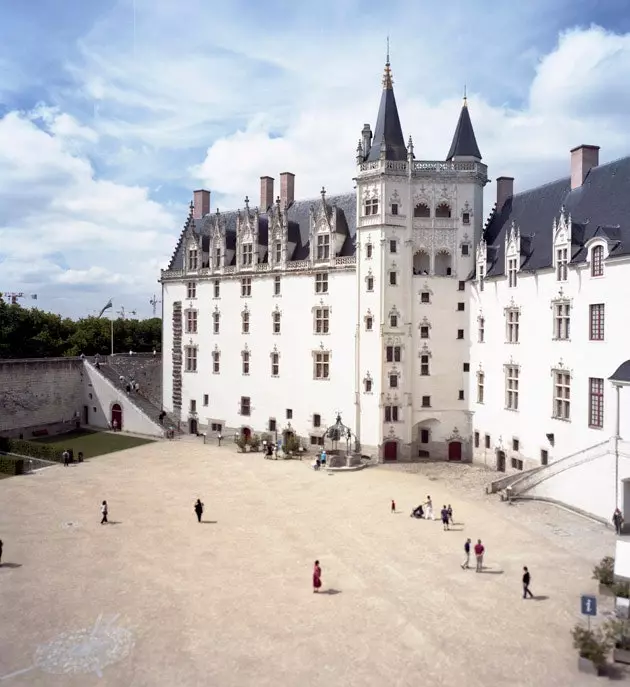
Castle of the Dukes of Brittany in Nantes
Tips for a route through Brittany
Travel by car: In addition to not having toll roads, it is the best way to discover these cities.
Gastronomy: Breton food is rich in food although crèpes and biscuits are the star dish and all cities are full of crèperies. Any ingredient is good to accompany this dough made with special white or black flour. The drink par excellence is Apple cider rough or semi raw , which usually accompanies every menu in the region. However, it is surprising to discover that the Bretons have their own beer or their own cola: the vintage Breizhcola.
Music: to accompany the journeys, the best is a compilation of the best local music. Artists like Alan Stivell with his mythical album 'Rennaissance of the celtic harp' , the folk Tri Yann, or the most pop soldat louis they are examples of successful groups that have based their creations on Breton culture.
